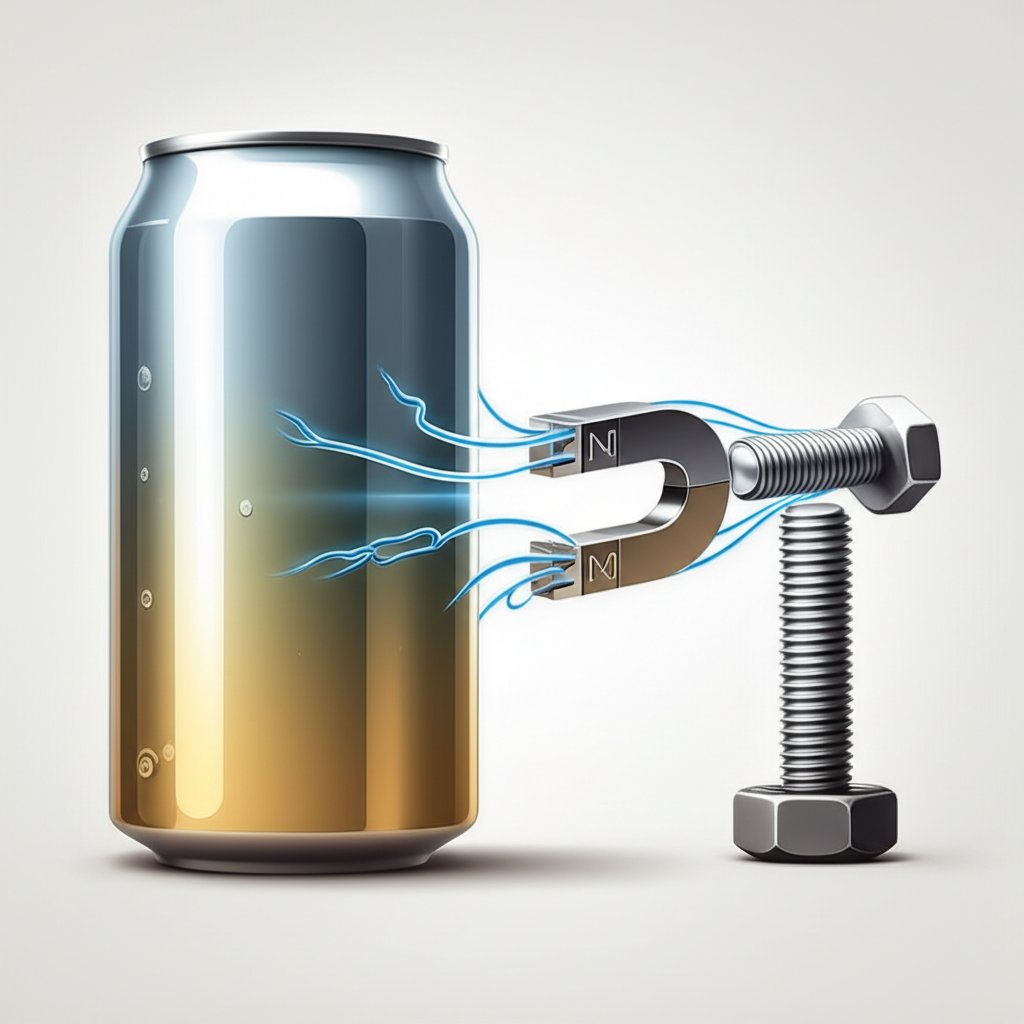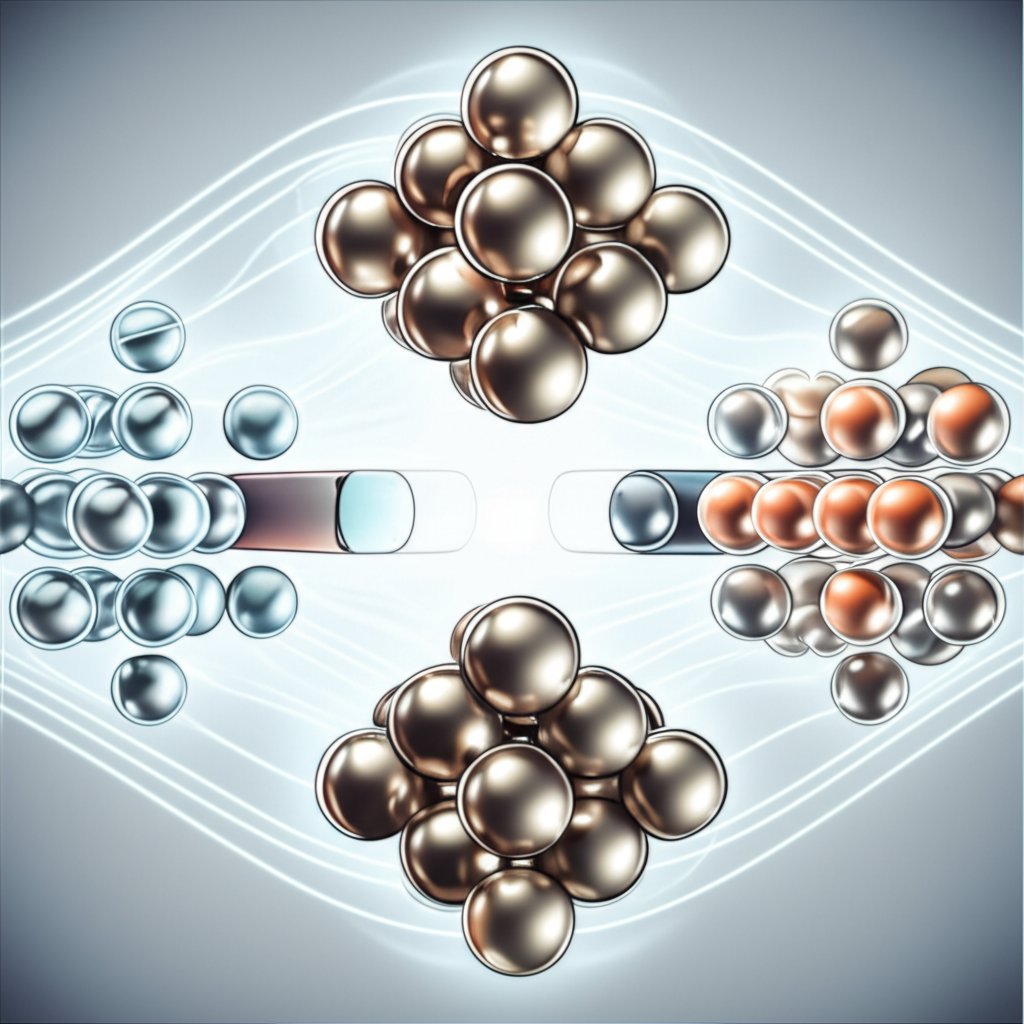
If you've ever wondered, "Is aluminum a magnetic metal?" you're not alone. The quick answer is no—aluminum is not magnetic in the way most people expect. Unlike metals such as iron or nickel, aluminum won’t stick to your fridge or snap to a magnet. But the story doesn’t end there. Scientifically, aluminum is classified as a paramagnetic material, meaning it is very weakly attracted to strong magnets. However, this attraction is so slight that it’s essentially undetectable in everyday life.
So, why do some people still ask if aluminum is a magnetic material? The confusion often comes from the fact that all materials interact with magnetic fields to some extent, but the strength and type of interaction vary. When it comes to aluminum magnetism, what you’re experiencing is a property called paramagnetism. This means that while aluminum has unpaired electrons that can align with a magnetic field, the effect is so weak, it’s practically invisible without scientific instruments or extremely strong magnets.
For most practical purposes, aluminium is magnetic or non magnetic? The answer is: it’s non magnetic. But its subtle interaction with magnetic fields has important implications in technology, engineering, and even medical equipment. In this article, we’ll break down the science behind aluminum’s unique magnetic behavior, explore why confusion exists, and reveal where this property becomes surprisingly useful.

When you ask, "Are all metals magnetic?" the answer is more nuanced than you might expect. Not every metal responds to magnets the same way. In fact, scientists classify materials into three main categories based on how they interact with magnetic fields: ferromagnetism, paramagnetism, and diamagnetism. Let’s break these down with simple analogies to help you visualize the differences.
So, which element is magnetic in the way most people expect? Only ferromagnetic materials—like iron—show strong, permanent magnetism. This is why refrigerator magnets stick to steel doors but not to aluminum cans or copper pipes. The key distinction comes down to how their atoms align in a magnetic field.
Ferromagnetic materials are strongly attracted to magnets, while paramagnetic materials are only very weakly attracted.
When people ask, "is aluminum ferromagnetic?" the answer is no. Aluminum is classified as a paramagnetic material. That means is aluminium a magnetic material? Technically, yes, but only in the weakest sense. Its attraction to a magnet is so faint that most people never notice it in daily life.
To put this in perspective, try holding a magnet to different metals around your home. You’ll notice strong attraction with iron-based objects, but almost nothing with aluminum. This subtle difference is what sets aluminum apart in the world of metals and magnetism.
Curious to learn more about aluminum’s unique properties beyond magnetism? Check out this related blog: Is Aluminum a Metal? Unveiling the Truth Behind This Versatile Element.
Understanding these basic types of magnetism not only answers the question, "are all metals magnetic?" but also sets the stage for exploring why aluminum behaves differently from other metals. Next, we’ll take a closer look at the atomic structure of aluminum and how it influences its magnetic properties.
Why doesn’t a magnet stick to aluminum, even though it’s a metal? The answer lies deep within the atom. Aluminum, with atomic number 13, has a unique arrangement of electrons. Specifically, it possesses three electrons in its outer shell, and some of these electrons remain unpaired. In many metals, unpaired electrons are the source of magnetic behavior. But for aluminum, things work a little differently.
Imagine each aluminum atom as a tiny spinning top with its own magnetic moment. In theory, these unpaired electrons could allow aluminum to display magnetic properties. However, in the real world, this effect is incredibly weak. Why? Because in aluminum, these magnetic moments are not lined up—they point in random directions. Only when a strong external magnetic field is applied do these moments briefly align, and even then, the effect is so subtle that most people never notice it.
This is why, if you test it at home, a magnet won’t stick to aluminum foil or a soda can. The question "does a magnet stick to aluminium?" or "will magnets stick to aluminum?" can be answered with a clear no—at least in everyday situations.
Another key concept that helps explain aluminum magnetic properties is magnetic permeability. Permeability describes how easily a material can become magnetized when exposed to a magnetic field. Materials with high permeability, like iron, are strongly influenced by magnets. But the permeability of aluminum is only slightly above that of empty space (vacuum), making its response to magnetic fields extremely weak [source].
To put it simply, aluminium permeability is low. That means even if you bring a powerful magnet close, the aluminum won’t become noticeably magnetized or attracted. This explains why, for most practical purposes, aluminum is considered non-magnetic, and why questions like "does a magnet stick to aluminum?" always lead to the same answer: not under normal conditions.
Understanding these atomic and electromagnetic details helps clarify why aluminum is so different from classic magnetic metals. But the story doesn’t end here—aluminum’s weak magnetism leads to some surprising effects when magnets move near it, which we’ll explore next.

Ever dropped a strong magnet through an aluminum tube and noticed it seems to float or fall slowly? If you’ve tried this simple experiment, you might wonder: do magnets stick to aluminum after all? The answer remains no—but what you’re witnessing is a fascinating phenomenon called eddy currents, not real magnetic attraction.
Here’s how it works: when a magnet moves near or through a piece of aluminum, it doesn’t stick. Instead, the changing magnetic field from the moving magnet induces swirling electrical currents inside the aluminum. These are called eddy currents. According to Industrial Metal Service, these currents create their own magnetic field, which opposes the original magnetic field of the moving magnet. The result? A repulsive or braking force that slows the magnet down, making it seem as if the aluminum is pushing back.
This effect is governed by Lenz’s Law, which states that the induced currents will always flow in a way that opposes the change that created them. That’s why, when you drop an alu magnet (magnet near aluminum), it slows down dramatically—almost as if the aluminum is repelling the magnet, even though it’s not truly magnetic.
This “magnetic braking” effect isn’t just a physics curiosity—it has real industrial applications. For instance:
So, why is aluminum non magnetic in the everyday sense, yet so responsive to moving magnets? The answer lies in its unique combination of electrical conductivity and paramagnetic properties. Aluminum doesn’t become magnetized, but it’s an excellent conductor. That means when a magnetic field changes near it, the metal responds with induced currents—producing temporary, localized magnetic effects that never linger once the movement stops.
Still wondering why isn't aluminum magnetic like iron? It’s because its atomic structure simply doesn’t allow for the strong, permanent alignment of electrons required for ferromagnetism. The eddy current effect is purely a result of physics in motion, not a sign that aluminum has suddenly become magnetic. Next, we’ll see how aluminum stacks up against other metals in terms of magnetism, helping you easily identify which materials are truly magnetic—and which just put on a good show when the magnets start moving.
If you’ve ever wondered why a magnet sticks to some metals but not others, you’re not alone. Whether you’re sorting scrap, shopping for cookware, or just curious about your soda can, it’s helpful to know what type of metal is not magnetic and which ones will attract a magnet. Below is a practical comparison table to help you quickly identify the magnetic behavior of aluminum and other common metals.
| Metal | Magnetic Type | Attraction to Magnet | Common Use |
|---|---|---|---|
| Aluminum | Paramagnetic (very weak) | No visible attraction | Beverage cans, aircraft, foil, wiring |
| Copper | Diamagnetic (very weak repulsion) | No | Electrical wiring, plumbing, coins |
| Titanium | Paramagnetic (very weak) | No | Medical implants, aerospace, jewelry |
| Brass | Diamagnetic (very weak repulsion) | No | Musical instruments, fittings, zippers |
| Carbon Steel | Ferromagnetic (strong) | Yes | Construction, tools, car parts |
| Ferritic Stainless Steel | Ferromagnetic (strong) | Yes | Appliances, kitchenware, automotive trim |
| Austenitic Stainless Steel | Mostly Non-magnetic (can be weakly magnetic after cold working) | No (or very weak after bending) | Food processing equipment, sinks, medical devices |
| Tin | Diamagnetic (very weak repulsion) | No | Coating for steel cans, solder, alloys |
Looking at the table, you’ll notice a clear pattern: only certain metals are truly magnetic. Ferromagnetic metals like carbon steel and ferritic stainless steel are the ones that will firmly stick to a magnet. In contrast, aluminum, copper, titanium, brass, tin, and austenitic stainless steel are all considered non-magnetic for practical purposes (source).
So, which metals are not magnetic? The vast majority of everyday metals—aluminum, copper, titanium, brass, tin, and most types of stainless steel (especially austenitic grades)—fall into this category. This is why you can’t use a magnet to sort aluminum cans from steel ones, but you can easily separate steel objects from non-magnetic metals in a recycling facility.
On the other hand, if you’re searching for which metal is magnetic in the classic sense, the answer is simple: iron, nickel, cobalt, and most of their alloys (like carbon steel and ferritic stainless steel) are strongly magnetic and will always attract a magnet.
Understanding what metals are not magnetic isn’t just trivia—it’s practical knowledge for sorting recyclables, identifying unknown metals, choosing materials for electronic devices, or even selecting safe cookware for induction stoves. For example, if you’re ever unsure about a piece of metal, just grab a fridge magnet. If it sticks, you’re likely dealing with a ferromagnetic metal. If not, it’s probably something like aluminum, copper, or brass.
Now that you know how aluminum compares to other metals, let’s clear up some stubborn myths about aluminum’s magnetism and see how you can test materials at home.
Have you ever wondered if that shiny kitchen foil could stick to a magnet? The idea of magnetic foil or a foil magnet is surprisingly persistent. In reality, the answer is clear: is aluminium foil magnetic? No, it is not. Aluminum foil is made from pure aluminum, which is a paramagnetic metal. That means it exhibits only a barely detectable, weak attraction to very strong magnetic fields—and certainly not enough for a magnet to stick in everyday use.
So why do some people think aluminum foil is magnetic? The confusion comes from a phenomenon called induced currents. When you move a magnet quickly near aluminum foil, tiny electrical currents (called eddy currents) are set up in the foil. These currents create a temporary, opposing magnetic field. You might feel a slight resistance or see the foil twitch, but this is not true magnetism—it’s just a fleeting effect caused by the movement of the magnet, not a sign that the foil itself is magnetic.
Another common misconception is that all types of aluminum—whether foil, cans, washers, or structural parts—behave the same way around magnets. In fact, the magnetic properties can vary slightly depending on the alloy and any coatings or attachments.
With so many alloys and lookalike metals out there, how can you tell if something is aluminum? Here’s a quick at-home test:
Remember: will a magnet stick to aluminum? Not under normal circumstances. If it does, you’re probably dealing with a mixed-material object or a special case like a steel core.
Understanding these common myths helps prevent mistakes in recycling, DIY projects, and science experiments. It’s easy to be fooled by clever packaging or subtle manufacturing choices, but the science remains clear: pure aluminum, whether it’s foil, a washer, or an anodized part, is not magnetic in any practical sense. Next, we’ll explore why this non-magnetic property makes aluminum so valuable in high-tech and safety-critical applications.

Have you ever wondered why some of the world’s most advanced machines and systems rely on aluminum instead of traditional magnetic metals? The answer lies in aluminum’s unique status as an aluminium non magnetic material. While it might not stick to a magnet, this property opens the door to critical applications where even a trace of magnetism could cause serious problems.
Let’s look at where aluminum’s non-magnetic nature truly shines:
Sounds complex? It is—especially when the margin for error is razor-thin. In these demanding industries, even a small impurity or a slight deviation in material properties can cause equipment failure or safety hazards. That’s why manufacturers require aluminum with precise, consistent characteristics—especially when it comes to being reliably non-magnetic.
If you’re sourcing aluminum for high-tech or mission-critical projects, choosing the right supplier is essential. A trusted partner like Shengxin provides custom Aluminum Profile solutions engineered for performance, purity, and reliability. Their expertise ensures that every batch meets stringent quality standards, so you can be confident that your components will perform flawlessly—whether they’re used in a hospital MRI suite, a satellite, or a next-generation electric vehicle.
In summary, the answer to “is aluminum a magnetic metal” is more than a curiosity—it’s a critical factor in industries where safety, precision, and performance are non-negotiable. Next time you see a sleek aircraft, a life-saving MRI machine, or an advanced electronic device, remember: it’s the aluminum and magnets relationship—specifically, aluminum’s lack of magnetism—that makes these innovations possible.
Aluminum is considered non-magnetic for everyday purposes. It is technically paramagnetic, showing only a very weak and undetectable attraction to strong magnets, which is why magnets do not stick to aluminum objects like cans or foil.
When a magnet moves near aluminum, it creates eddy currents in the metal. These currents generate a temporary opposing magnetic field that can slow down or repel the magnet, but this is not true magnetic attraction—it's a result of aluminum's electrical conductivity, not its magnetism.
Aluminum cannot become magnetic like iron or steel. Its atomic structure only allows for a very weak, temporary response to strong magnetic fields, and it never retains magnetism after the field is removed.
Unlike ferromagnetic metals such as iron or carbon steel, aluminum is paramagnetic and does not visibly attract magnets. Other non-magnetic metals include copper, brass, titanium, and most types of stainless steel, making aluminum easy to distinguish with a simple magnet test.
Aluminum's non-magnetic nature is crucial for applications like MRI machines, aerospace navigation, and sensitive electronics, where magnetic interference could cause safety or accuracy issues. High-quality, non-magnetic aluminum profiles are essential in these fields.
 Інтернет-сервіс
Інтернет-сервіс 0086 136 3563 2360
0086 136 3563 2360 sales@sxalu.com
sales@sxalu.com +86 136 3563 2360
+86 136 3563 2360